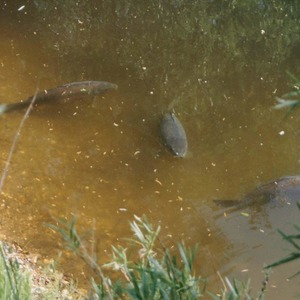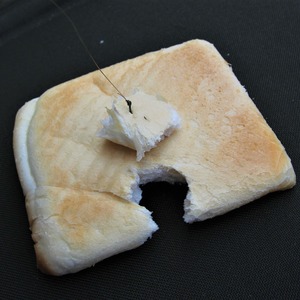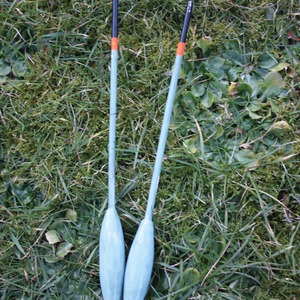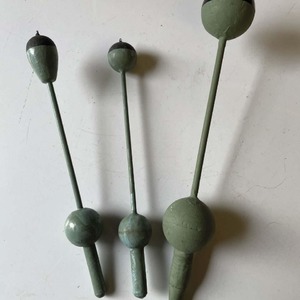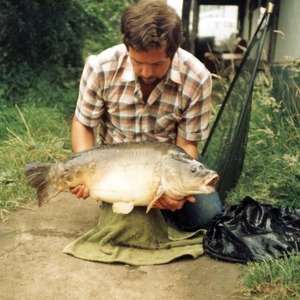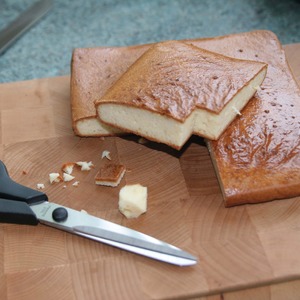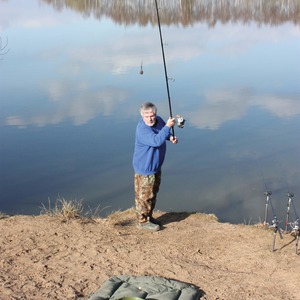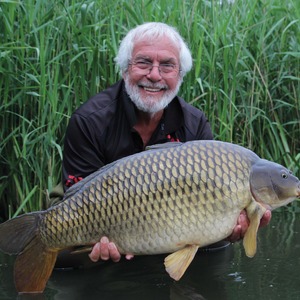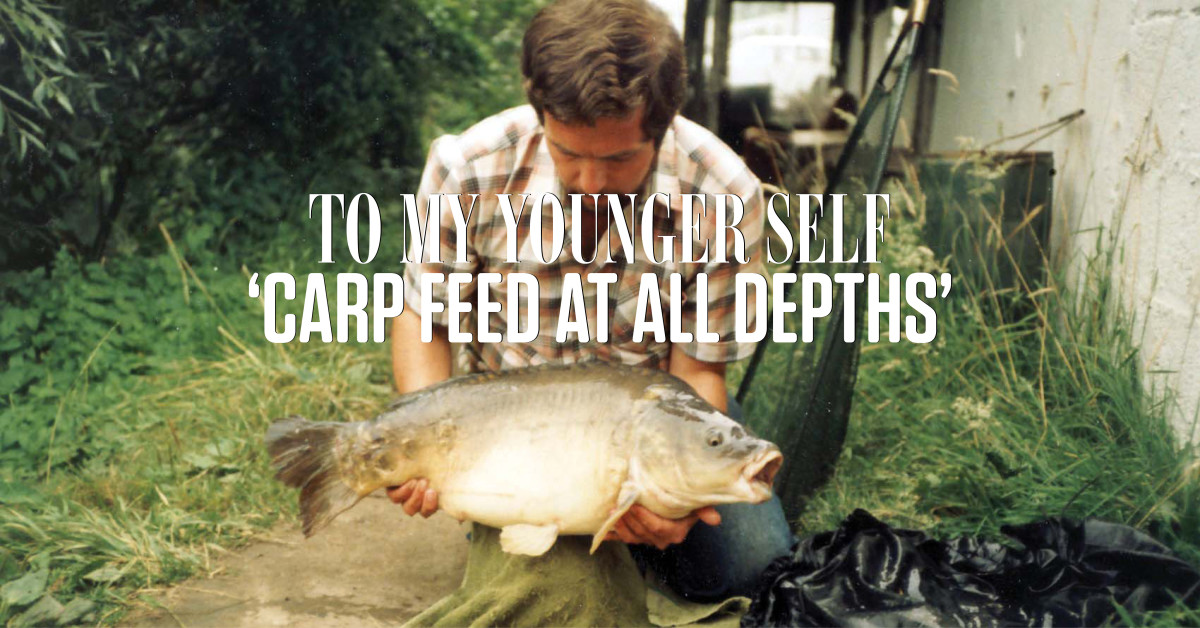
TO MY YOUNGER SELF
Whilst hindsight is a wonderful thing, it also seems that old habits die hard where Brian Skoyles is concerned
We learn from our mistakes, they say. If only that were true. Sometimes you do, particularly when a mistake you make is just plain daft, and I’ve made plenty of those during my angling journey. For instance, it’s not a good idea to turn up to fish Fôret d’Orient with 2.75lb TC rods and Cardinal 55 reels, or arrive at a venue after a four-hour drive to find you have no landing net. Over the years, I’ve also arrived without my bedchair or bivvy, and on one occasion, I reached the pinnacle of stupidity when I found myself with no bait.
Some errors are less obvious, and looking back over my 50-plus years of dangling a line for the odd carp or two, one particular type of mistake sticks out in my mind. I refer to mistakes that have possibly cost me hundreds of carp since I first managed to get things wrong back in the late seventies. If only my younger self had come to the right conclusions…
I’ve always loved my surface fishing, and generally I’m at my happiest targeting fish at close range. In the seventies, I would visit two local waters, Emmotland and Billy Baker’s, for my surface-fishing fix. Pond 1 at Emmotland was a small, but relatively deep water. The carp there loved a surface bait, and Pond 1 was the water where I fine-tuned my early surface-fishing techniques.
At first, I fished with large chunks of crust. I loved watching the carp approach the bait and slurp it in, and then see the water exploding as the rod hooped over. During that era—pre-floating particles and the like—the biggest problem was nuisance fish destroying the softening crust. From time to time, what was left of my crust would start to slowly sink. I got into the habit of watching the line as the crust sank, and it wasn’t unusual to hook a carp subsurface.
On Pond 1, around the same time, I got into a conversation with a very good match angler who was targeting the roach. Fishing midwater with a basic waggler set-up, he offered a small worm on the hook. He was loose-feeding maggot and also feeding chopped worm. He told me that he was getting fed up with being smashed up by carp. They were ruining his roach fishing.
Back at my swim, I hatched a plan. I saw no reason why I couldn’t scale up his tactics and let those ‘nuisance’ carp ruin my day as well, and when I returned a few days later, I was fully equipped. Armed with a selection of huge, homemade waggler-type floats, some snake-like lobs and a pint or two of maggots, I was good to go. It all looked a bit daft, and although it shouldn’t work, it did. I caught carp.
“It all looked a bit daft, and although it shouldn’t work, it did. I caught carp.”
On one occasion during early spring, I was fishing on the bottom in wet and windy conditions. I was catching naff all on my usual large cubes of luncheon meat, even though the fish were very active. They were topping all over the lake. I didn’t have any lobworms, but I had plenty of spare luncheon meat. More out of frustration than anything, I set one of my giant wagglers about four feet above the hook, and fishing in around 10 feet of water, I lobbed the float out towards where I’d seen most fish topping. I then let it drift about, dividing my time between watching the motionless bottle top on my leger rod, and the waggler as it was dragged around by the bow in my line. Out of the blue, the float disappeared and I found myself playing a carp. I’m not sure who was more surprised, me or the carp.
Over the next few weeks, I caught several more carp on my giant waggler-luncheon meat combination. I felt, though, that the captures were a bit of a fluke, and I never really tried the tactic anywhere else.
Billy Baker’s was, back in the day, an iconic East Yorkshire venue. Established local carpers look back at fishing the water with real affection. I loved my summers on there, mainly because the carp loved to feed on the top. Many a summer’s evening I would dash home from school and head there and remain on the bank until the water closed at 10 p.m. At the time, I was becoming quite proficient at fishing floating particles, usually Munchies, but later Chum Mixers. I designed and made my own controllers, and I used a powerful catapult so I could reach the small central island where the fish spent a lot of their time. The one downside was the birdlife. The small island was home to several coots and ducks. They also loved my floaters, but a slow-sinking bubble float helped me get around the issue.
A little like I’d done with my giant wagglers at Emmotland, I fished slow-sinking floaters. It was a bit of a faff to set everything up, though. Basically, I fixed an inline bubble float about a yard from my hook. Those old-style bubble floats had a small hole in them, into which a plastic plug fitted. You could gradually fill the float with water until it started to slowly sink. It took a while to get it right as it needed to sink very, very slowly. That involved a fare bit of playing around with the set-up.
Once I was happy, I’d cast out the float and let it sink, all the time watching the line. My bait of choice was usually homemade floater cake. I could side-hook a chunk of the cake and then trim it to produce an almost critically balanced arrangement. Once it had sunk, I would wait a minute or two before repeating the process. Again, I would cast and watch the line as the bubble float gradually dragged the bit of cake downwards. I would never know when a take would come. Sometimes it was as the bait was sinking, but just as often, the line would go after the bait had settled on the bottom. Billy’s was the only water I ever used that same, slow-sinking bubble float method.
My successes with soggy sinking crusts, waggler-fished chunks of Plumroses’s finest and those that came after messing about with bubble floats were all put down to being flukes, rather than techniques to be routinely incorporated in my carp fishing. A note to younger self, then: How about using some of your many unused brain cells to spot the obvious… carp are happy to feed at all depths!
The common factor in all my weird and wonderful attempts to catch carp from Emmotland and Billy’s was that I was catching carp midwater, but it never occurred to me that for much of the year I would totally ignore this area. My fishing was divided into mostly presenting baits on the bottom, and some surface fishing when it was hot and sunny. I had my reasons for rejecting the obvious—all totally wrong reasons, obviously—but at the time I had answers I was happy with.
Takes on the slow-sinking crust were pure coincidence. Those carp that took a crust bait as it sank were more than likely coming up for it on the surface; it was just by chance that they took sooner.
“The crazy thing is, despite knowing that fishing baits midwater can be very effective, it’s still a tactic I tend to use as a last resort.”
The explanation of why the drifting luncheon meat was working lent itself to my totally inaccurate understanding of aquatic life. I reasoned that some sort of hatch was taking place at the surface and was drawing fish up off the bottom. For that reason, I deployed the giant waggler only in the spring, when I guessed such a hatch might take place. The clue had been the excessive topping. It never occurred to me that such topping might take place all year round—there must have been an awful lot of things hatching!
Why the suspended worm worked was easier to accept, after all, insects drop off trees and get washed into the water during heavy rain. Simples!
The slow-sinking floater cake was an easy one to get totally wrong. When the bubble float had settled on the bottom, the cake had had time to absorb water, lose its buoyancy and also sink. The carp were actually picking the bait up off the bottom.
Looking back, I’m a bit surprised at how thick I was being. I’m sure, though, that most of my close friends would have had the same problem. We didn’t have the knowledge of fish behaviour that we do now. There was no internet, and no underwater footage available to watch online. Written material was limited and a lot of guesswork was involved.
Today, we know that carp spend a lot of time midwater, and there is plenty of potential to catch them if we make the effort to do so where they want to be, rather than where we want to fish for them. I still ask myself why, back in the day, despite catching carp on suspended and sinking baits midwater, it never occurred to me to try anchoring a buoyant bait. I did play around with anchored crust, but only where the water was shallow enough for me to fish the bait on the surface.
The crazy thing is, despite knowing that fishing baits midwater can be very effective, it’s still a tactic I tend to use as a last resort. It’s often a case of, as I’m not catching on the bottom, I’ll lob out a Zig Rig, rather than conditions being right for a Zig and fishing the method from the off.
I fished a social a year or so back with the Daiwa Carp Team, and their skills when using Zigs were so in advance of my own. They worked at it and they reaped their rewards. I copied them and reaped my own in the shape of a stunning Brasenose One common. Has the experience changed the habit of a lifetime, though? If I’m honest, not really. I still rarely offer a bait midwater.
Perhaps I need a note to my older self: You can teach an old dog new tricks.
Brian Skoyles (June 2024)




